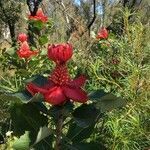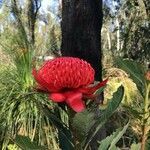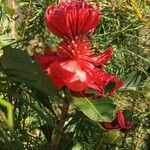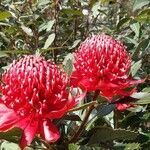A medium sized shrub. It is tall, slender and rather stiff. It grows 2-3 m high. It spreads 1-2 m across. It has many stems. The leaves are broad and grey-green. They are leathery and have lobes. They have small teeth around the edge. The flower is large and bright red.





